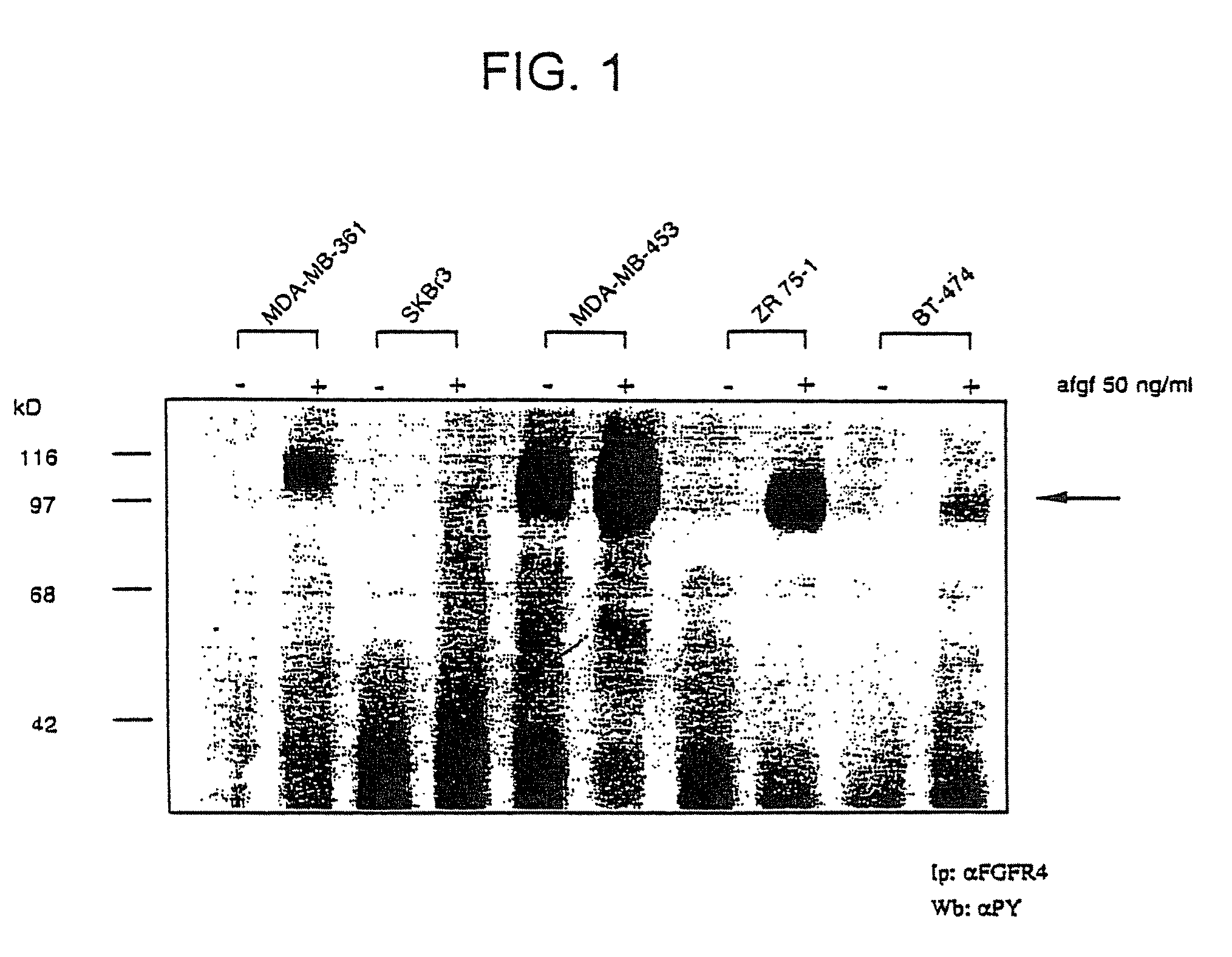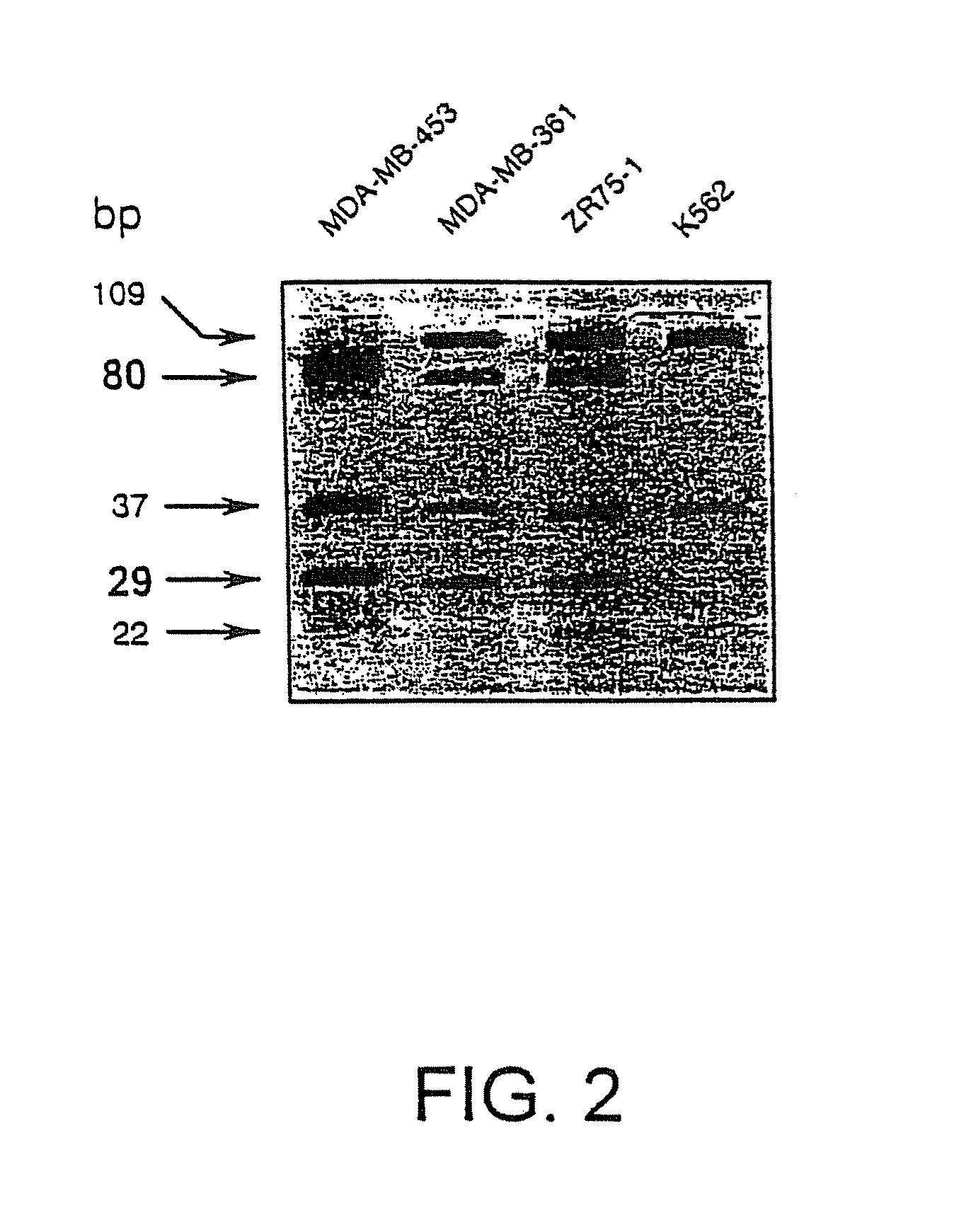Method of diagnosing an RTK-hyperfunction-induced disorder
a hyperfunction-induced disorder and rtk technology, applied in the field of diagnosing an rtk-hyperfunction-induced disorder, can solve the problems of uncontrollable cell growth, increased organism size, cell degeneration, etc., and achieve the effect of low overexpression and/or alteration
- Summary
- Abstract
- Description
- Claims
- Application Information
AI Technical Summary
Benefits of technology
Problems solved by technology
Method used
Image
Examples
examples
[0071]Cell Culture. The human cell lines MDA-MB-453, ZR 75-1, K562 and SKBr3 were obtained from the ATCC. The individual supply sources can be found in the table at the end. MDA-MB-453, K562 and ZR 75-1 were cultivated in RPMI (Gibco, Eggenstein) containing 10% foetal calf serum (Sigma, Taufkirchen). SKBR3 was cultivated in McCoy's 5a (Gibco, Egenstein) containing 15% foetal calf serum. All cell culture media contained penicillin / streptomycin (Sigma, Taufkirchen). The cells were incubated at 37° C. in a water-vapour saturated atmosphere and 8% CO2.
[0072]Cloning of FGFR-4388Arg / wt. For preparation of RNA from K562 and MDA-MB-453 cells, 3×107 cells were lysed with guanidinium isothiocyanate and purified by ultracentrifugation in a CsCl gradient. The cDNA synthesis was effected with reverse transcriptase (Boehringer, Mannheim) and 10 pmol of “random oligonucleotides” in each case, according to the manufacturer's instructions. 0.5 μl were used in a subsequent PCR reaction. FGFR-4388Arg ...
PUM
| Property | Measurement | Unit |
|---|---|---|
| Length | aaaaa | aaaaa |
| Length | aaaaa | aaaaa |
| Length | aaaaa | aaaaa |
Abstract
Description
Claims
Application Information
 Login to View More
Login to View More - R&D
- Intellectual Property
- Life Sciences
- Materials
- Tech Scout
- Unparalleled Data Quality
- Higher Quality Content
- 60% Fewer Hallucinations
Browse by: Latest US Patents, China's latest patents, Technical Efficacy Thesaurus, Application Domain, Technology Topic, Popular Technical Reports.
© 2025 PatSnap. All rights reserved.Legal|Privacy policy|Modern Slavery Act Transparency Statement|Sitemap|About US| Contact US: help@patsnap.com



